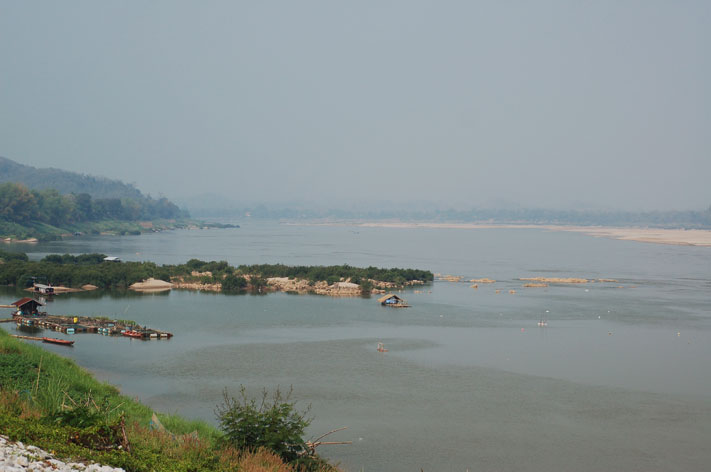 |
View on the Mekong river near Chiang Khan in the Loei province in N Thailand.
photo Idei |
|
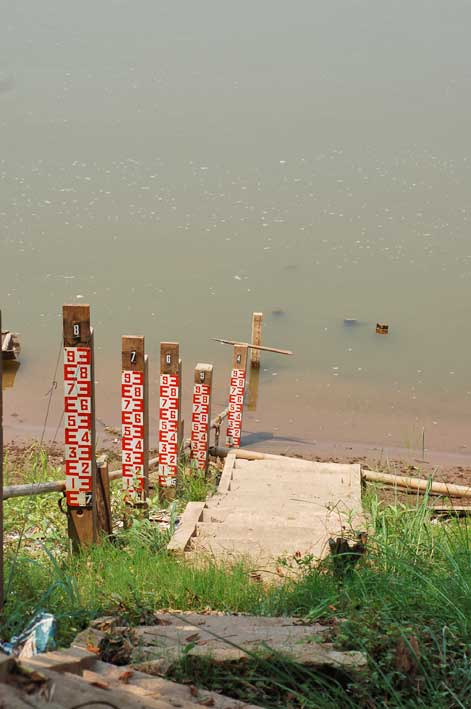 |
Low water in January. It may rise 10 m in the wet season, see the graph below.
photo Idei
|
|
 |
Along the borders of the Mekong at low water: lots of ponds and small streams.
photo Idei |
|
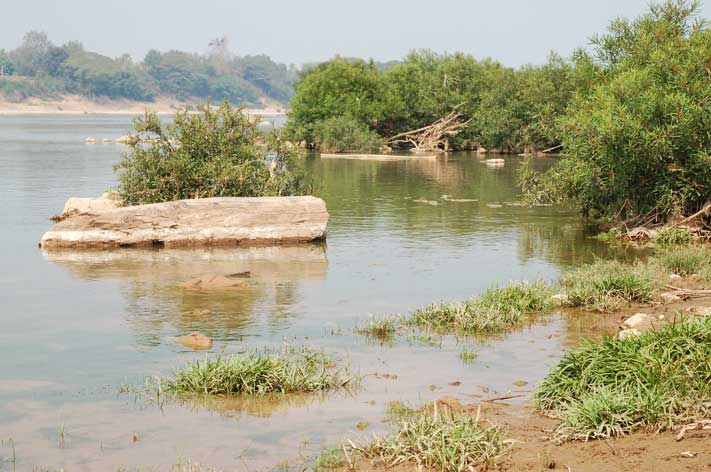 |
Scattered all over, smaller and bigger patches of Cryptocoryne.
photo Idei
|
|
| |
|
|
|
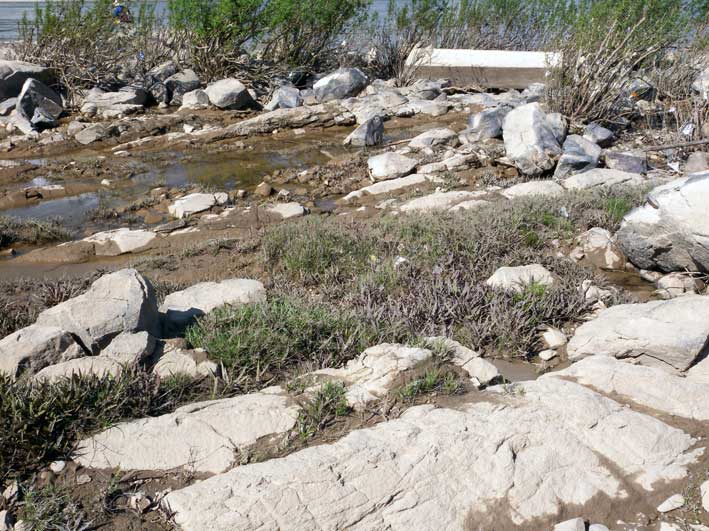 |
Most patches are Cryptocoryne crispatula var. crispatula and it is impossible to find C. loeiensis when it doesn't flower for the leaves are quite similar.
photo Idei
|
|
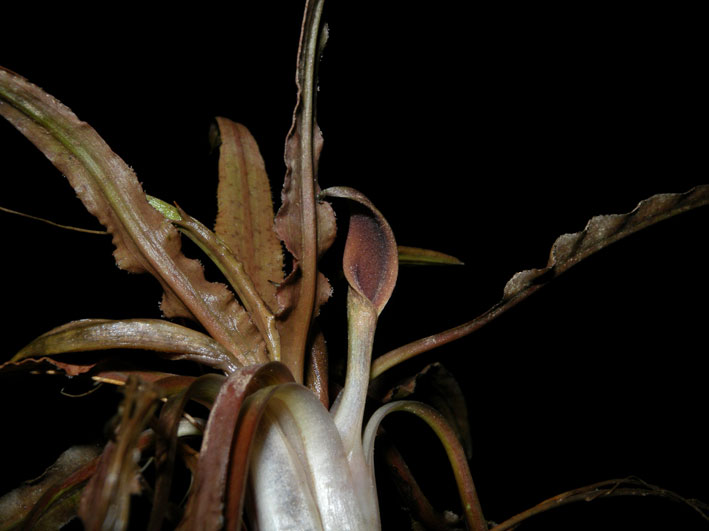 |
A new accession from 2010 near Chiang Khan shows Cryptocoryne loeiensis.
photo Idei
|
|
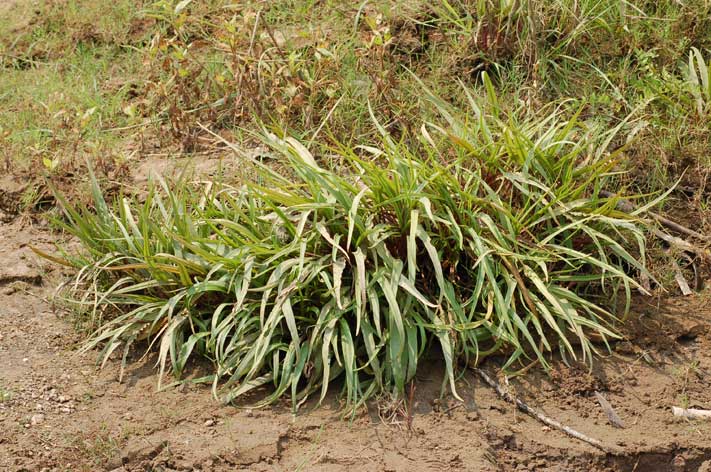 |
A narrow leaved C. crispatula var. crispatula in the same area ...
photo Idei
|
|
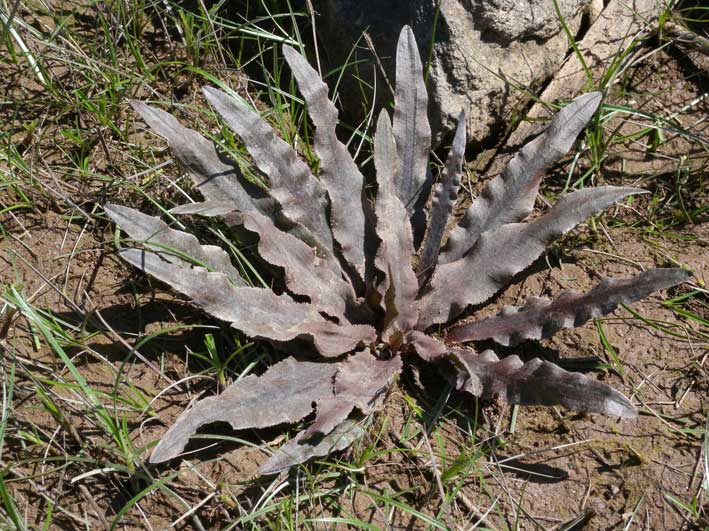 |
... but also a dark, broad leaved C. crispatula var. crispatula and more different forms!
photo Idei
|
|
| |
|
|
|
 |
At the start of the growing season(October), this 3 year cultivated plant is repotted. Note the spike form (terete) leaves and moreover the impressive contractile roots.
coll. Idei T2, cult B 1145a
|
|
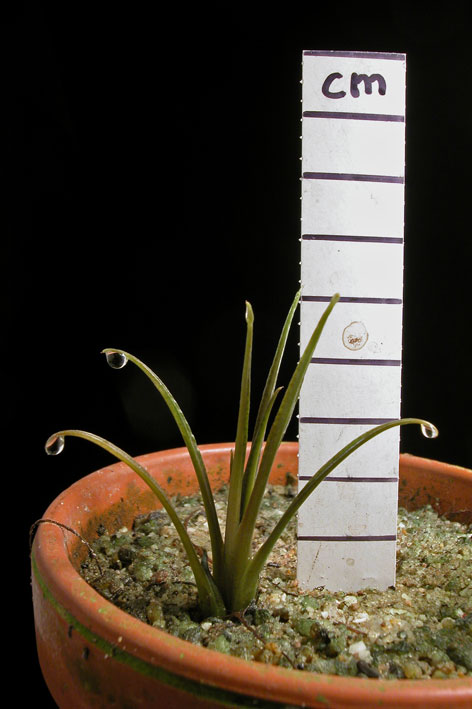 |
Immediately when it starts growing it will develop a spathe between one of the outer terete leaves. Note the strong guttation (drops) on the leaves.
coll. Idei T2, cult B 1145a
|
|
 |
Already two spathe's appeared. The plant has now its 'emerged' leaves. The leaves may be more brownish, depending on light conditions.
coll. Idei T2, cult B 1145a
|
|
 |
The spathe has only the limb above the surface. The tube and the kettle of the spathe are subterranean, in this picture the soil is removed for about 2 cm.
coll. Idei T2, cult B 1145a
|
|
| |
|
|
|
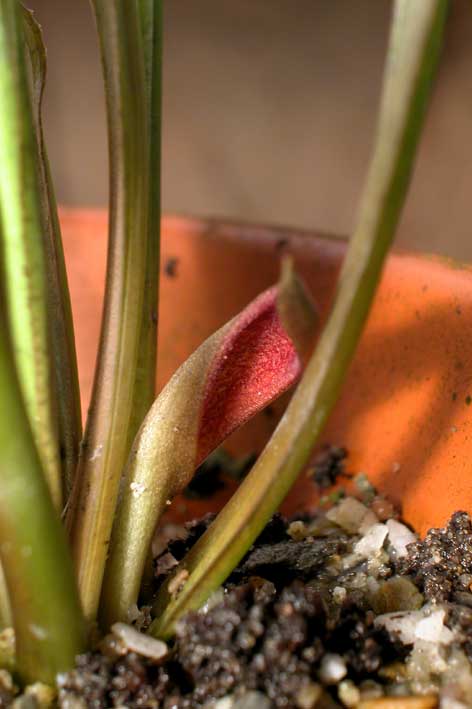 |
The limb of the spathe is bend forward and it has a half twist normally.
coll. Idei T2, cult B 1145a
|
|
 |
The limb surface is rough, in contrast to C. crispatula.
coll. Idei T2, cult B 1145a
|
|
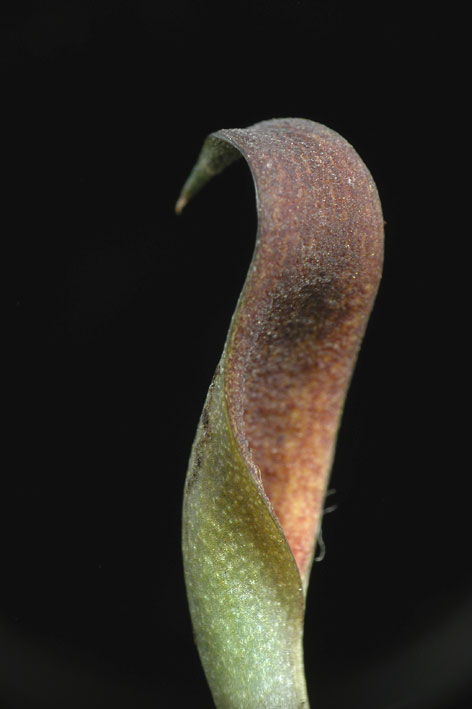 |
Sometimes the limb shows a backward turn.
coll. Idei T2, cult B 1145a
|
|
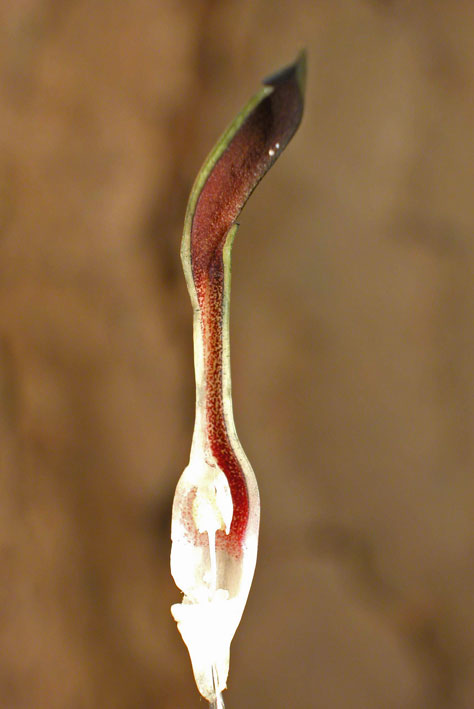 |
A length section of the spathe of C. loeiensis. Note that there is no collar.
coll. Idei T2, cult B 1145a
|
|
| |
|
|
|
 |
A length section of the kettle. Note the red upper half of the kettle and the transverse 'roof' over the spadix.
coll. Idei T2, cult B 1145a
|
|
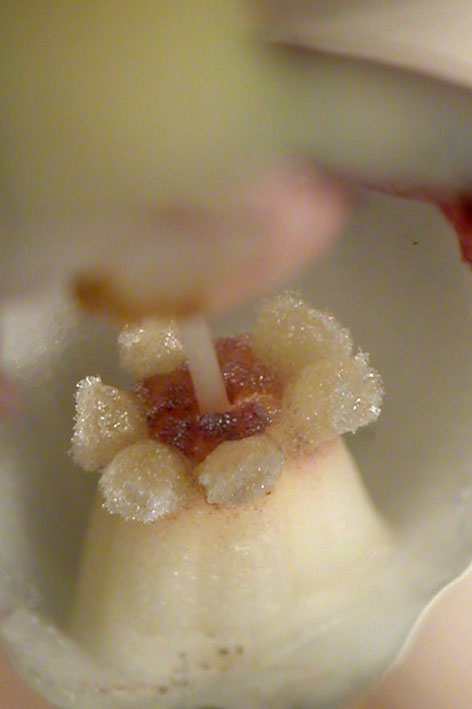 |
The female flowers with a short style and rounded stigma's. In the inner circle brownish olfactory bodies.
coll. Idei T2, cult B 1145a
|
|
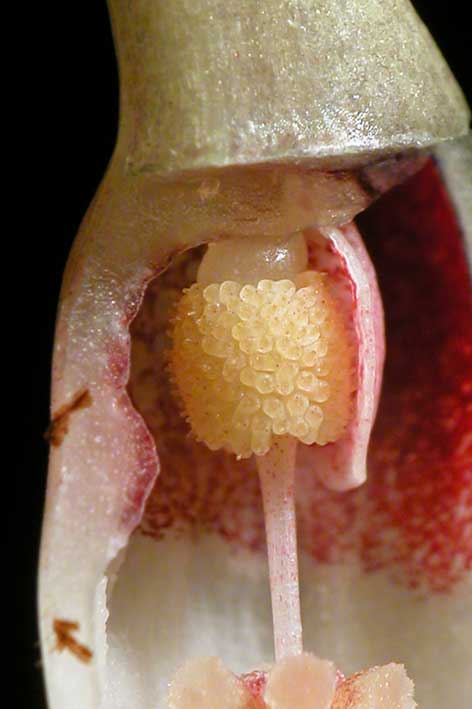 |
The female flowers with a short style and rounded stigma's. In the inner circle brownish olfactory bodies.
coll. Idei T2, cult B 1145a
|
|
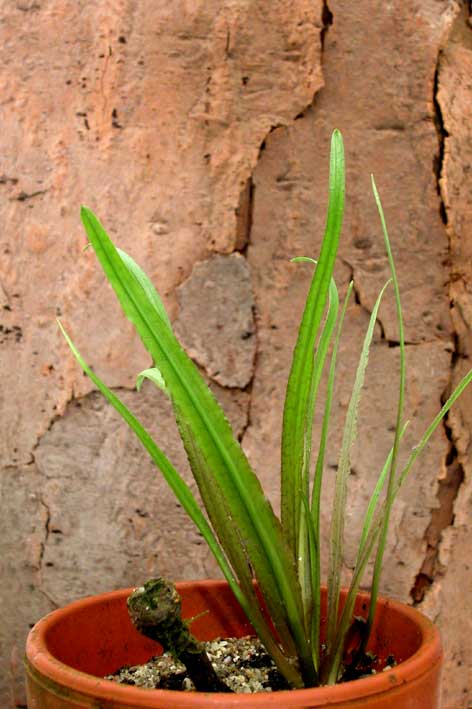 |
The rhizome went in cultivation in 2006. It was put horizontal on the soil. When it grew, the contractible roots pulled the growing end down into the soil.
coll. Idei T2, cult B 1145a
|
|
| |
|
|
|
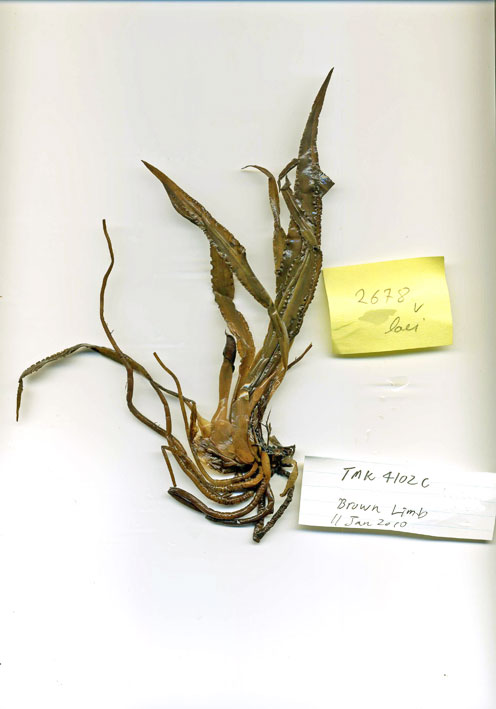 |
An alcohol preserved plant of - probably - C. loeiensis.
coll. Idei TMK4102C
photo Jacobsen
|
|
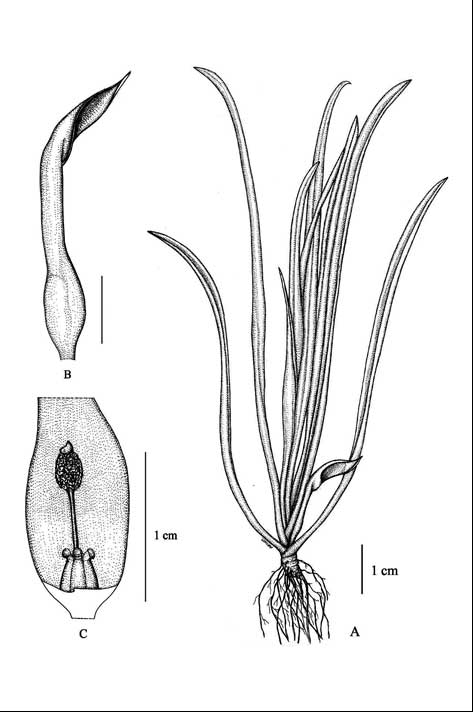 |
Drawing after a cultivated specimen of C. loeiensis.
coll Idei T-2, cult. B 1145a
drawing A. Kamgamnerd
|
|
|
 |
Distribution of C. loeiensis in the Loei province of Thailand.
|
|
| |
|
|
|
Cultivation of C. loeiensis in loamy sand with or without some peat litter is easy, but it may take an extra year to flower it. In July the plant starts withering, all the leaves will go down in this resting phase and a few spike like leaves develop (in nature it will be submerged). In September / October it will thrive again normal leaves. Up to now the plant does not propagate by runners, so it is still very rare.
Because of its seasonal character it is not suited for the aquarium.
Updated January 2011 |
Literature.
- Bastmeijer, J.D., T. Idei & N. Jacobsen, 2010. Notes on Cryptocoryne (Araceae) of Thailand, including a new species from Loei Province. Thai Forest Bulletin (Bot.) 38: 179-183. (Document service)
- Idei, T., J.D. Bastmeijer & N. Jacobsen, 2010. Geschichten vom Mekong: Zwei neue Cryptocorynen (Araceae). Aqua-Planta 35(4): 139-146 (download form the Document service, included an English translation)
- Mekong River Commission (for water heights and predictions) at: http://ffw.mrcmekong.org/
|
|